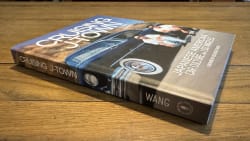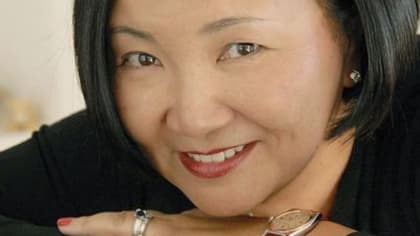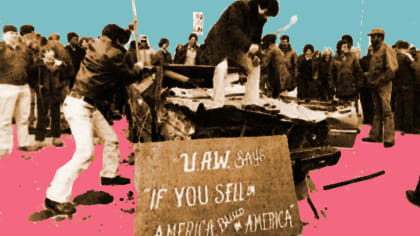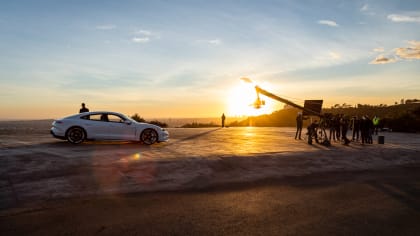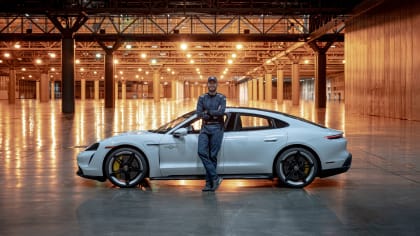CRUISING J-TOWN: BEHIND THE WHEEL OF THE NIKKEI CAR CULTURE

Reaching back 100 years, curator Oliver Wang has amassed a breathtaking exhibit of Japanese American car culture. This Japanese American National Museum exhibit will be at the Mullin Gallery in the South Campus of ArtCenter College of Design in Pasadena, California, July 31-December 13, 2025.
A few familiar names and topics, but many unfamiliar: Fred Jiro Fujioka’s $18 million car empire (in pre-WWII dollars); Larry Shinoda’s celebrated work designing the 1963 Corvette; Indy 500-winning mechanic and engine-builder Takeo “Chickie” Hirashima; the impact of Bob Hirohata’s Barris brothers' customized 1951 Mercury; the early import tuners in 1970s Gardena and their modified Datsun 510s; the explosion of import tuners in 1980s San Gabriel Valley; and the subsequent emergence of American drifting in San Gabriel Valley.
By Susie Ling & Roy Nakano
Thu, Jul 3, 2025 09:30 AM PST
Featured image above: A portion of the banner for the Cruising J-Town exhibit is a montage of photographic prints of Japanese American car culture (courtesy of the Japanese American National Museum).
"My cousin set me up on a date once decades ago. The twenty-something Japanese American said he’d pick me up in his silver Datsun 240Z. I rolled my eyes; how unoriginal, I thought. In the late 1970s, there were trends: disco, Members Only jackets, feathered hair, and cruising. It seemed to me Japanese Americans wanted to be pharmacists and engineers - and drive rice rockets." - Susie Ling
The Datsun 240Z was actually a breakout phenomenon as it was the first “cool” Japan-made car within the reach of the working class after a series of sardine can boxes (Editor’s note: yeah, the Toyota 2000GT featured in the 1967 James Bond movie You Only Live Twice was very cool but not exactly within reach of the working class). By the early 1980s, gas efficient Hondas and Toyotas would be replacing GMs and Fords – such that Vincent Chin would become a victim of a hate crime in Detroit as he was assumed to be of Japanese descent by two unemployed/under-employed autoworkers (see LA Car’s US vs THEM).
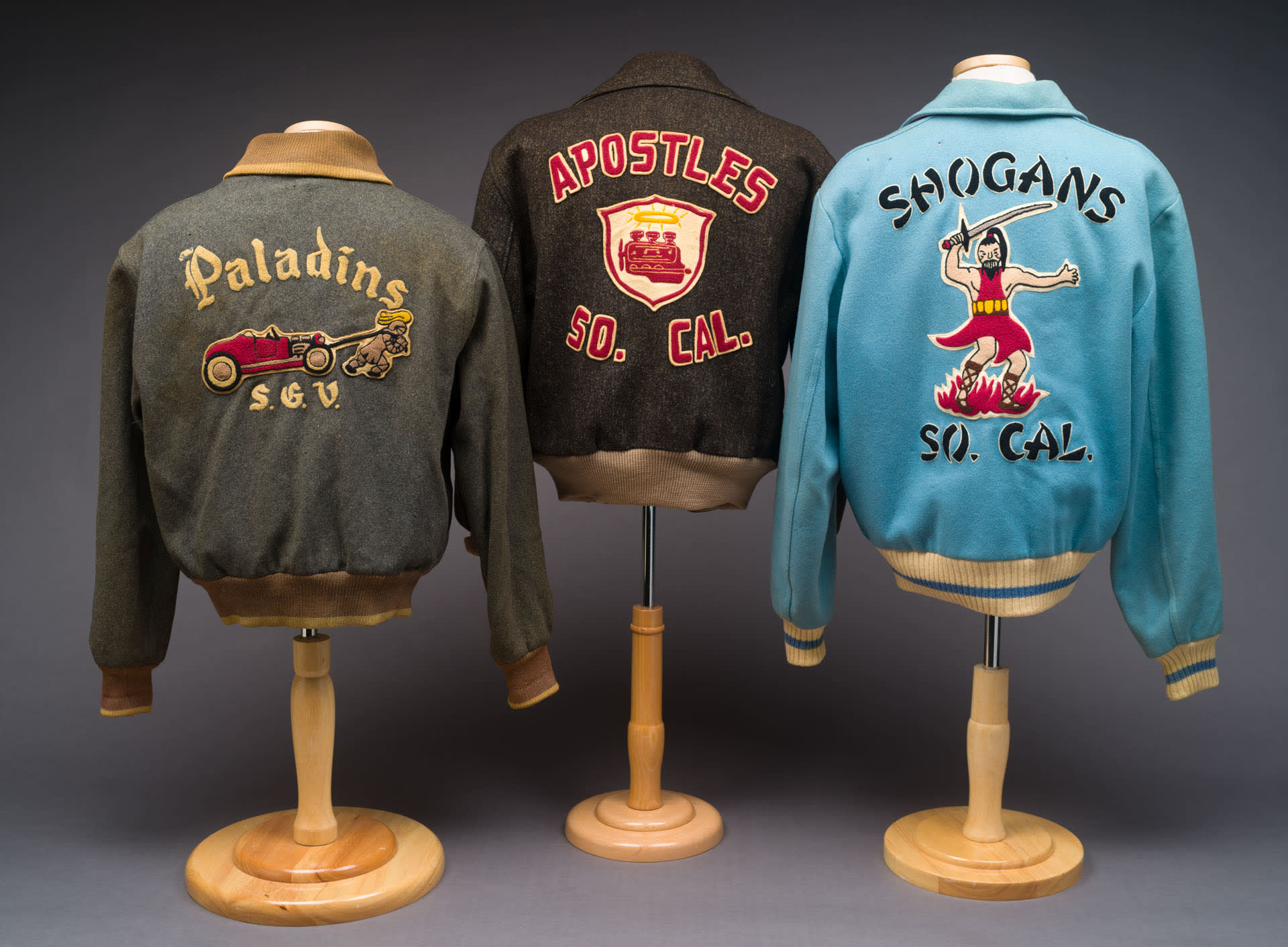
The Datsun 240Z is only one car trend in the Japanese American ethnic enclave. Dr. Oliver Wang, curator for the new exhibit, Cruising J-Town: Behind the Wheel of the Nikkei Car Culture, said of the 1950-60s, “My father-in-law and his high school friends formed a car club – Kame [meaning turtle] - in the San Fernando Valley… I've interviewed other people who were in Gardena/Torrance crews like Apostles and Shogans, and in Boyle Heights/East L.A.’s Mikados." Dr. Wang has documented many Japanese American car clubs after WWII. Teens customized their family’s 1950s Fords and Chevys.

(Photo by Dennis Kuba. Visual Communications Photographic Archive).
For the older Japanese Americans in 1950-60s Pasadena, there was a lot of bonding around gardening trucks. About forty percent of the men (and some women) in this suburb were relegated to gardening after the incarceration camp experience. Long-time Pasadena resident Gary Fujimoto said, “After a day of gardening, the men would park behind the nurseries and swap beer, stories, and tips on trucks and fishing.”
Before The War
Japanese American car enthusiasm date back before the World War II incarceration experience. SoCal knows the legend of Fred Jiro Fujioka. An Issei who came from Japan in 1903, he started as an engineering student at Throop University, now Cal Tech. In the 1910s, he opened “Japanese Fred’s Garage” in Wichita. Advertisements for Japanese Fred’s Garage read:
“Give me a trial. I clean and oil your car all over. I patch your inner tubes. I call for and deliver your machine. Room for 25 cars. Storage $5 per month. I guarantee satisfaction. I carry fine gasoline and oils.” – Fred Fujioka
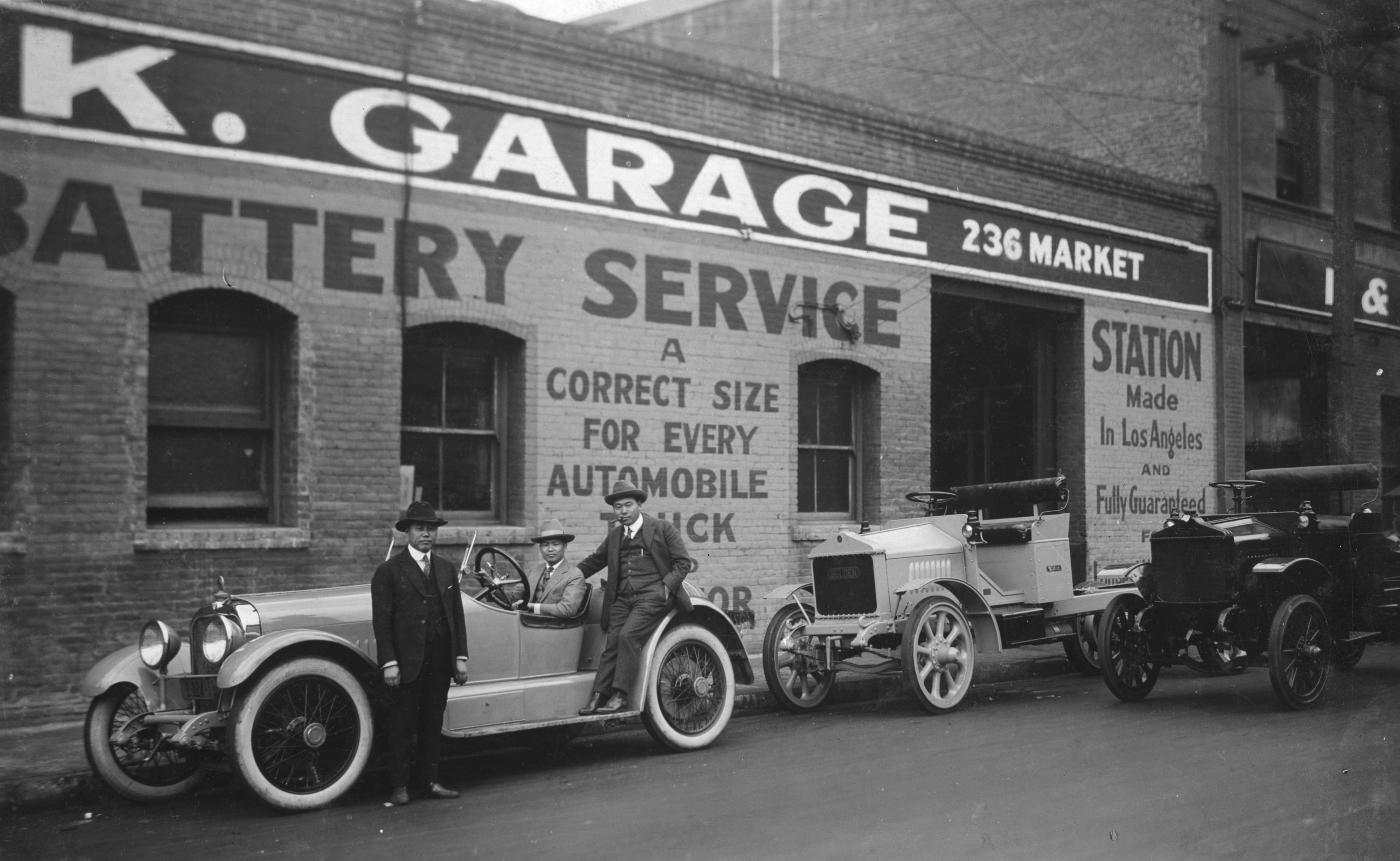
Thereafter, Fujioka returned to Los Angeles and established the F&K Garage on San Pedro Street with George Kawamoto. As many Japanese Americans depended on trucks in their vegetable and fruit farms, garages were an essential neighborhood hangout. Fred was ambitious and talented. Before WWII, Fred Fujioka had the largest Oldsmobile dealership west of the Mississippi River.
Impact of the War
Due to his strong involvement in the Japanese American community and efforts to promote ties with Japan, Fred Fujioka was arrested just two hours after the Japanese bombing of Pearl Harbor, according to Robert D. Cunningham in "1923 Fujioka: A Story of Determination, Dedication, and Disappointment" as published in The Old Motor, April 14, 2021.
"[T]he family lost nearly everything...They lost the family’s Oldsmobile dealership, trucking business, real estate and other assets estimated at $18 million," said Teresa Watanabe in “Lost Dream Restored to Japanese American Family” in the Los Angeles Times, December 13, 2009.
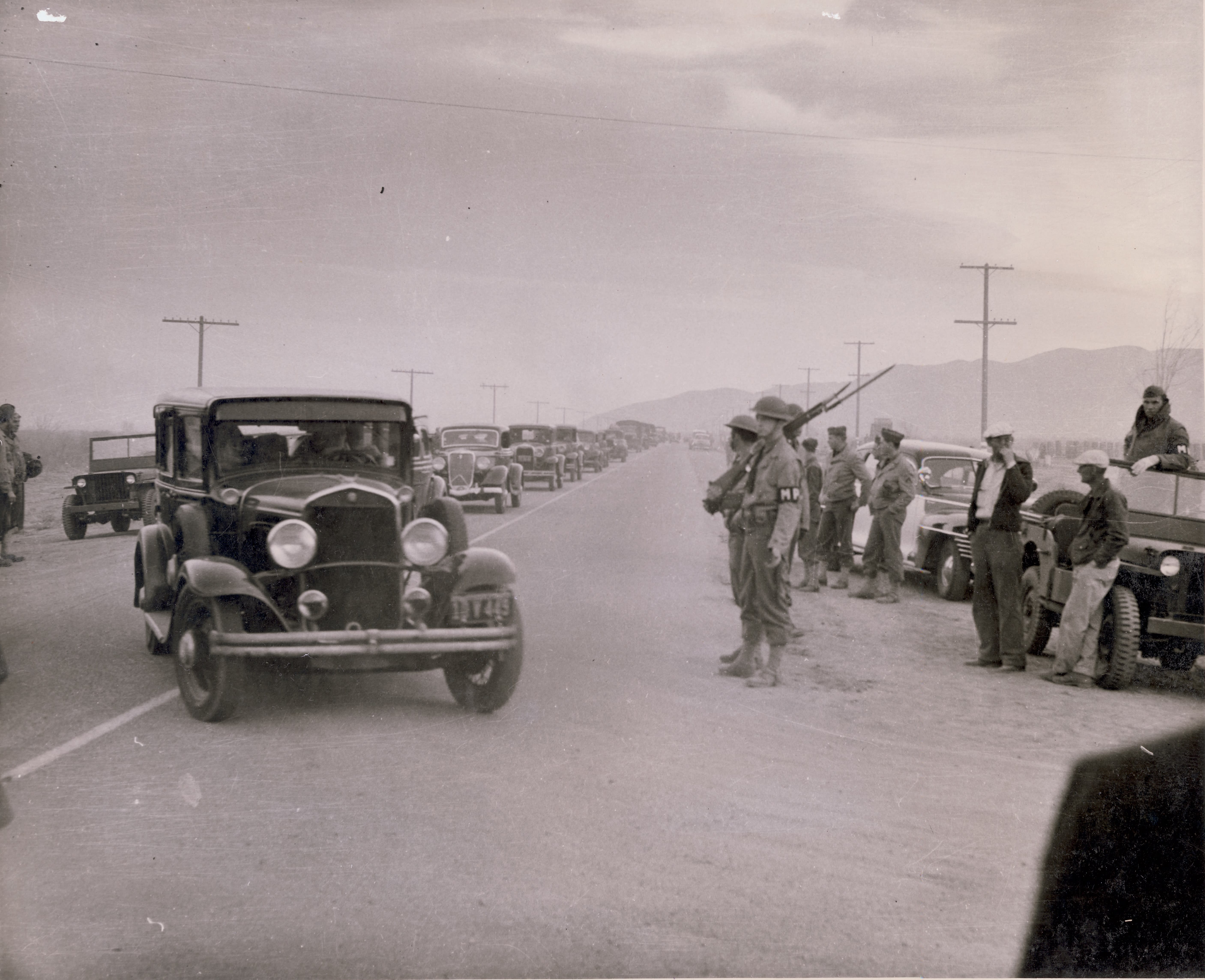
"Afterwards, he built a new career in the insurance business. Despite the harsh treatment, Fred said his proudest day occurred in the 1950s when he was finally granted American citizenship,” according to Cunningham.
Another pioneering Japanese American automotive enthusiast was Lawrence “Larry” Kiyoshi Shinoda, best known for leading the work in designing the 1963 Corvette Sting Ray. His first recorded design, however, was a set of reclining back chairs for his mother and grandmother made while he was incarcerated in Manzanar, CA under Executive Order 9066 ("Larry Shinoda - 1998 Induction to the Corvette Hall of Fame" - National Corvette Museum).*
After Shinoda was released from Manzanar, he moved back to Southern California where he worked for the intake manifold company Weiand, received a degree from Pasadena City College and later from the Art Center College of Design - all the while building and racing hot rods like many of his contemporaries following release from EO 9066 incarceration camps.
Those other contemporaries included Takeo “Chickie” Hirashima (an Indianapolis 500-winning engine mechanic), Yoshihiro Okamuro (known as Yam Oka in his days as a flaming hot rod racer), Garry Koike (a pioneering member of Carroll Shelby’s crew team), and Yasushi “Sush” Matsubara (best known as the driver of the Pisano-Matusbara Revell Funny Car and Mondello & Matsubara Blown Fuel Altered Fiat Topolino).
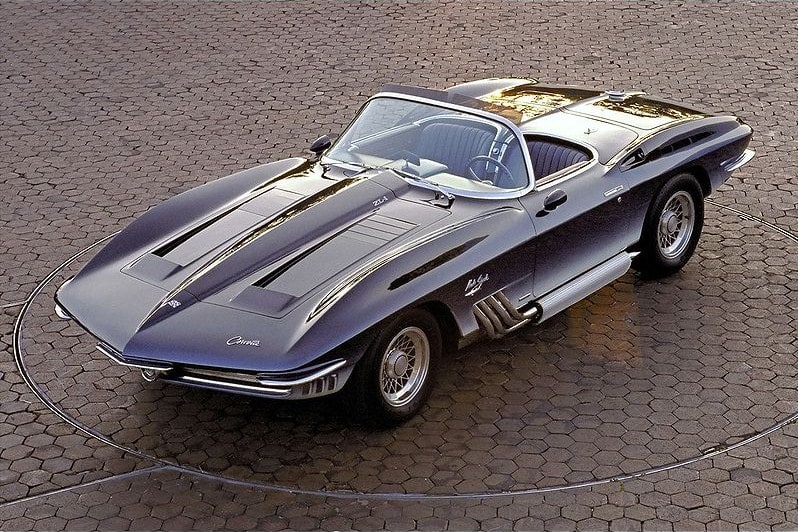
Fast forward toward to the 1970s and through the end of the 20th century. Japanese Americans were heavily involved in import car customization and drifting.
The Birth of Import Tuners in the 1970s
In the early 1970s, following the Sports Car Club of America Trans Am wins by Brock Racing Enterprises in Datsun 510s and 240Zs, Japanese Americans began lowering their family’s Datsun 510 sedans to emulate BRE racers.
This was particularly popular in the suburb of Gardena, CA, where many families bought their 510s from Gardena Datsun. Unlike many of its boxy competitors, the 510 was fitted with a four-wheel independent suspension and an overhead cam engine powering the rear wheels - making it an ideal candidate for performance upgrades.

The Datsun parts departments did good business selling performance parts to these pioneering import tuners (see LA Car’s In Search of the First Datsun 510 Street Tuner in the USA).
The New American Hot Rod of the 1980s
In the 1980s, the Honda Civic (and to a lesser degree, the Acura Integra) replaced the Datsun 510 as the vehicles of choice for the import tuner. The San Gabriel Valley became the flashpoint for the Southland’s import tuners.
“I remember frequenting a magazine store in the San Gabriel Valley's Alhambra district during the late 1980s, and there were rows of periodicals on American hot rods and muscle cars. Meanwhile, outside the store were tuned Hondas and Acuras. The disconnect between what was carried by the store and the cars popular in the community was very visible. It took the next decade for the import tuner magazines to appear.” - Roy Nakano
Drifting Into the 1990s
Meanwhile, the automotive sport of drifting made its impact in America in the 1990s. Drifting competitions were held in Japan since the 1970s, but its popularity in the US coincided with the introduction of the manga series Initial D in 1995. The San Gabriel Valley was still the hot bed of import tuners of the drifting kind.
However, the front-wheel drive Hondas and Acuras are not the ideal car for drifting. All of a sudden, cars like the Nissan 240SX, with its rear-wheel drive, four-wheel independent suspension, and high finesse and control of oversteer, became much sought after for drifting fans. Drifting became an official competition in America with the introduction of Formula Drift during the turn of the century.
Cruising J-Town
The term “cruising J-town” has likely been in use for as long as Japanese Americans roamed the streets of Little Tokyo, Los Angeles in automobiles. However, it gained prominence after WWII, with J-town being a more informal and endearing term for Little Tokyo, Los Angeles. In 1975, filmmaker Duane Kubo directed Cruisin’ J-Town, about the jazz group Hiroshima and its roots in Little Tokyo. The group later featured a song, "Cruisin’ J-Town", on their second album, released in 1980.
"It's worth noting Hiroshima founder, Dan Kuramoto, is the son of Jack Kuramoto, who opened the much beloved Jack's Auto Service in Little Tokyo before WWII and was able to return to it after camp, and ran it for decades," says curator Oliver Wang. "Dan's younger brother, John Kuramoto, was the three time national quarter-midget racing champion, starting at age 10 into the late 1950s."
Little Tokyo in the 21st Century
While Japanese Americans have been cruising J-town for decades, it wasn’t until 1988 that the first official Nisei Week Auto Show was held, according to curator Wang. "It was an attempt to replace the 'Cruise' which had been shut down by that point. Ken Miyoshi, who launched the Import Showoff series in 1995, took over the Nisei Week Auto Show in 2000."
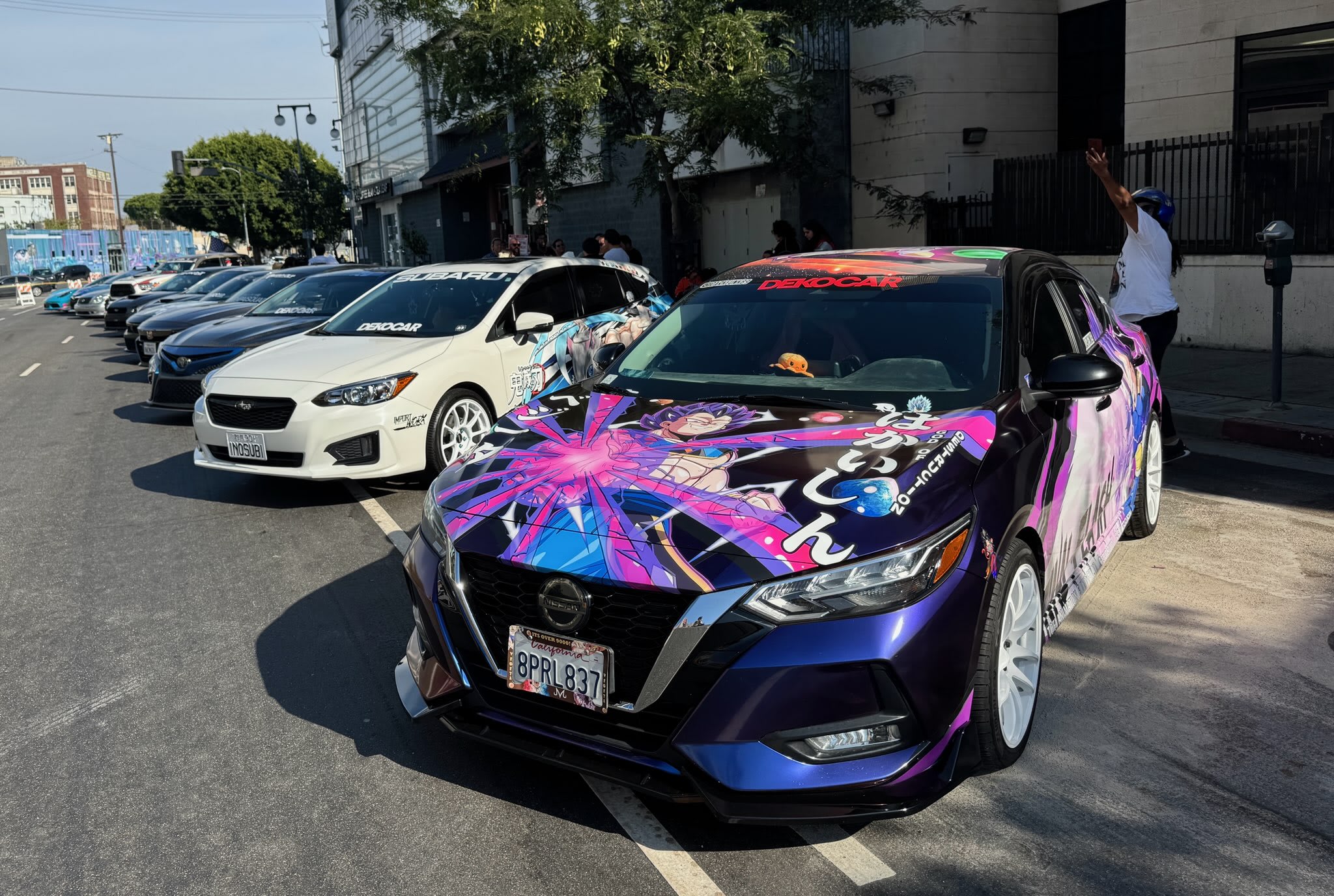
Since 2019, however, it’s been the Nisei Week DEKO Car Show, or the DEKO Car Show and Anime Marketplace. The Dekocar (as in decorative car) trend emphasizes wild paint jobs or vinyl wraps, often with anime themes. Accessories are high on style and not necessarily so much on performance. The Dekocar events appear to have closed the gender gap in the automotive arena, with more women participants than traditional car shows.
Cruising J-Town – The Exhibit
Oliver Wang is the curator for the Japanese American National Museum exhibition, Cruising J-Town: Behind the Wheel of the Nikkei Community. He is a professor of sociology at CSU Long Beach and the author of Legions of Boom: Filipino American Mobile DJ Crews of the San Francisco Bay Area (Duke Univ. Press, 2015). He is author and editor of the exhibition’s companion book, published by Angel City Press (see below).

Dr. Wang is also a regular writer on music, arts and culture for outlets including NPR's All Things Considered, the Los Angeles Review of Books, Los Angeles Times, and KCET’s Artbound. He has co-hosted the podcasts Pop Rocket and Heat Rocks and is currently developing a new podcast on the songs of Asian America.
Wang has put together a breathtaking exhibit, Cruising J-Town: Behind the Wheel of the Nikkei Community, sponsored by the Japanese American National Museum. It’ll be on display at the Mullin Gallery on the South Campus of ArtCenter College of Design in Pasadena, California, from July 31 - November 12, 2025 (Editor's note: it's just been extended through December 14th!).
It is not to be missed.
* The Alien Enemies Act vs. Executive Order 9066 - Many community leaders such as Fred Jiro Fujioka were arrested and placed in detention centers under the Alien Enemies Act of 1798 based on their nationality as citizens of an enemy nation under wartime. On the other hand, Larry Shinoda (while in the 7th grade) was incarcerated in Manzanar after Executive Order 9066 was signed into law on February 19, 1942. EO 9066 authorized the military to designate certain areas as exclusion zones, and to remove and exclude anyone from those zones. It was used to remove and incarcerate Japanese Americans in these zones without hearings, regardless of their citizenship status.
About the Japanese American National Museum
As the national repository of Japanese American history, the Japanese American National Museum (JANM) creates groundbreaking historical and arts exhibitions, educational public programs, award-winning documentaries, and innovative curriculum that illuminate the stories and the rich cultural heritage of people of Japanese ancestry in the United States. JANM is located at 100 North Central Avenue, Los Angeles, CA 90012, in Little Tokyo. You can visit its homepage here. Due to ongoing renovations at its facility, JANM’s Cruising J-Town exhibit is being held at the Mullin Gallery in the South Campus of the ArtCenter College of Design.
About the Mullin Gallery at the ArtCenter
Located in the South Campus lobby of the ArtCenter College of Design, the Peter and Merle Mullin Gallery serves as a welcoming point for the campus community and the public. The gallery is designed to accommodate media in a wide variety, from intimately scaled works of art to automobiles. The gallery is located at 1111 S. Arroyo Parkway, Pasadena, CA 91105. The gallery is ordinarily open Wednesday through Saturday, 12 noon to 5 pm. However, for the Cruising J-Town exhibit, the Gallery will be open Wednesday through Sunday, 12 noon to 5 pm. You can visit its homepage here.
Cruising J-Town: Behind the Wheel of the Nikkei Community
Curated by cultural scholar and writer, Dr. Oliver Wang, the exhibition features rare photographs, car-related ephemera, and the oral history testimonies of dozens of Japanese American car enthusiasts, racers, mechanics, journalists, industry professionals, and many others.
Cruising J-Town tells the stories of influential figures and everyday car lovers alike. Revisit historic Los Angeles racing locations through photos and memorabilia, discover the central role that cars and trucks played in the working lives of Japanese Americans.
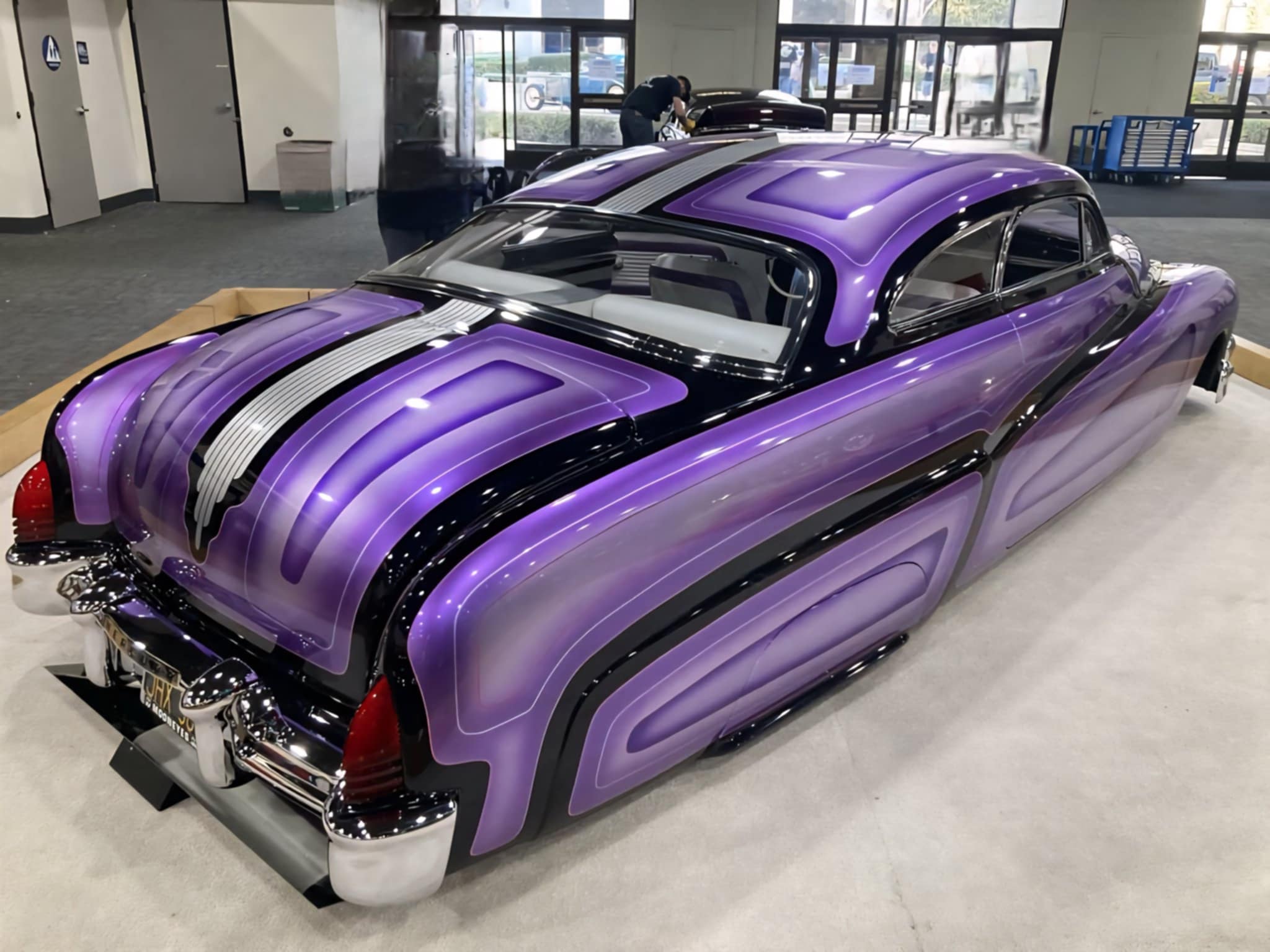
The classic cars anchoring the exhibition:
George Nakamura’s 1940s “Meteor” hot rod
Brian Omatsu’s custom 1951 “Purple Reign” Mercury Coupe
Kirk Shimazu’s 1956 Ford F150 pickup truck
Tod Kaneko’s 1973 Datsun 510, and
Nadine Sachiko Hsu’s hot pink 1989 Nissan 240SX from the professional drift racer’s days with the Drifting Pretty team.
Presented By:
Japanese American National Museum
With sponsorship from the
National Endowment for the Humanities
Where:
Peter and Merle Mullin Gallery
ArtCenter College of Design
1111 South Arroyo Parkway
Pasadena, CA 91105
626-396-2200
The Gallery is one block south of the Fillmore Station on Pasadena's Metro A Line.
When:
July 31, 2025 through November 12, 2025 (Editor's note: It's just been extended through December 14th!). For the Cruising J-Town exhibit only, the Mullin Gallery will be open Wed-Sun, 12 noon to 5pm.
How Much:
Admission is free.
More
For more information about the exhibit, go to the Cruising J-Town page for the Japanese American National Museum. To see a video clip of the exhibit, click here.

About The Authors

Susie Ling is an Associate Professor in the Social Sciences Division of Pasadena City College, where she teaches history. In addition to amassing hundreds of oral histories in the Southern California region, she's been a long-time contributor to LACar - with articles spanning from vehicle reviews to historical insights about Los Angeles.
Together with
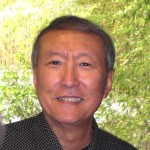
Roy Nakano gave birth to LACar in the late '90s, having previously delivered LA Audio File back in the '80s. Aside from the occasional review, Roy likes to stray off the beaten automotive path: "Six Degrees of Reparations" reflected on the regretful ethical paths taken by car companies throughout history. "Traveling Through the Past and Present of the Green Book" looked at businesses that took a stand against racism and the man that wrote the book on where to find them. "Best Cars to Drive in Rush Hour Traffic" was an LACar guide published in the pre-GPS era. "In Search of the First Datsun 510 Tuner" looked at one of the milestones in the origin of import tuners. And "Us vs Them" examines the instances when rivalry among automotive enthusiasts crossed the line to violence and even death.
